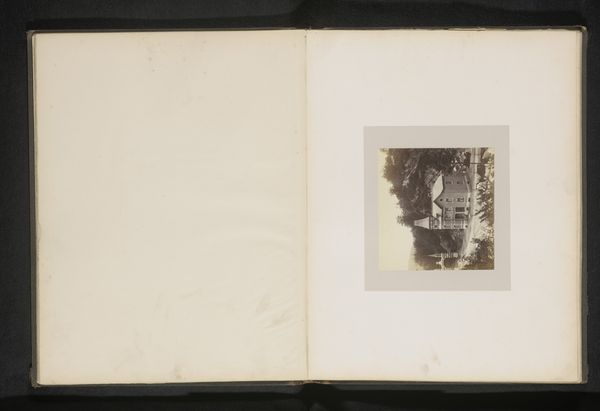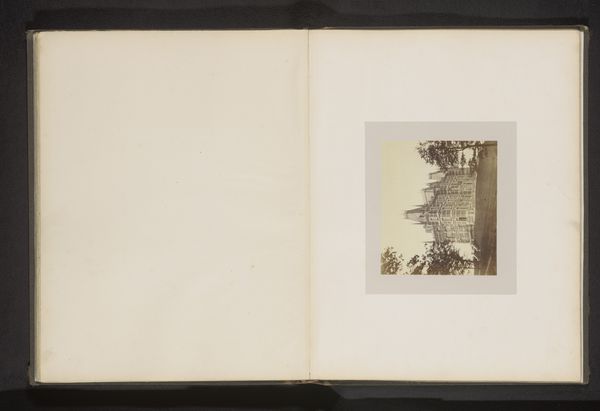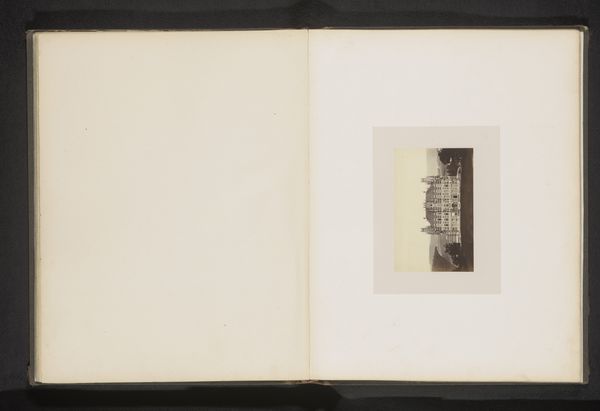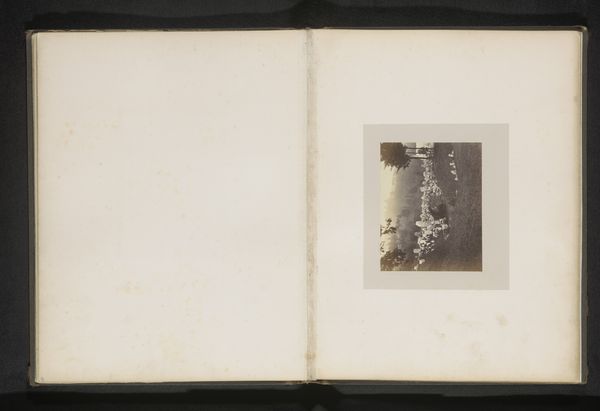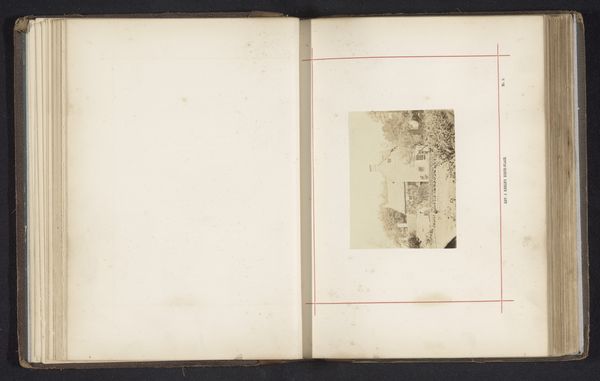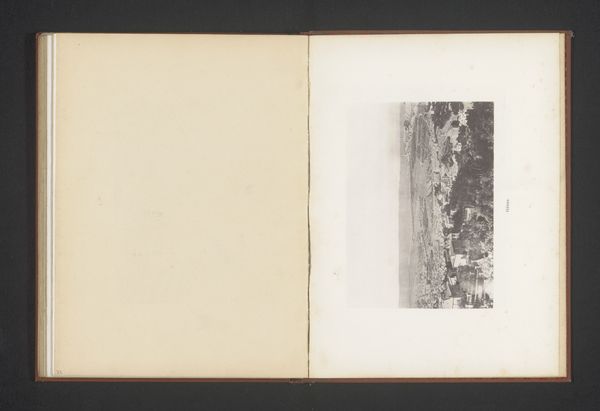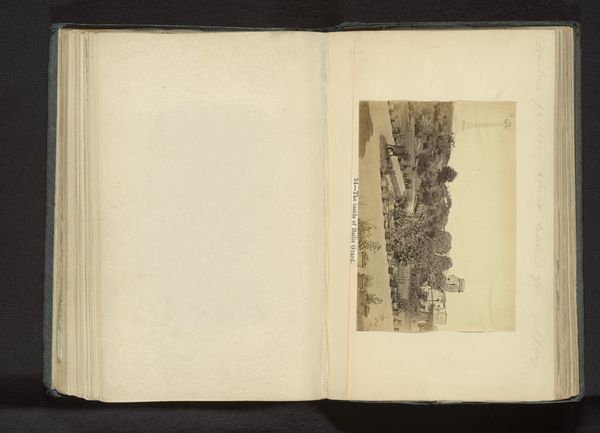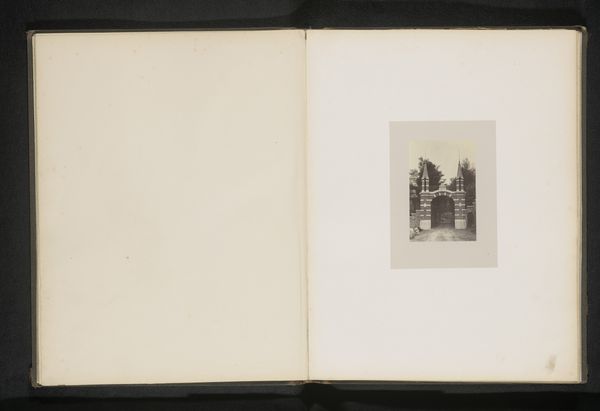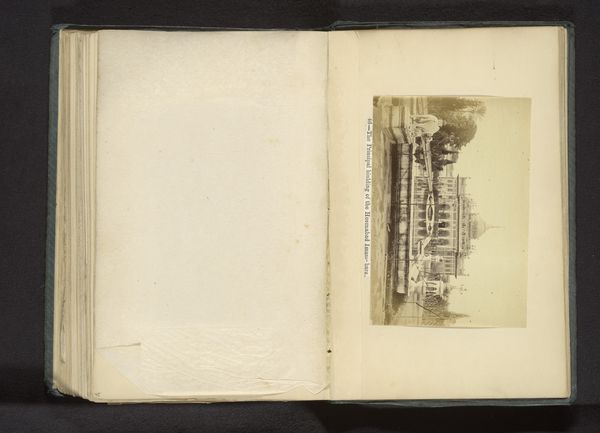
Dimensions: height 109 mm, width 125 mm
Copyright: Rijks Museum: Open Domain
Curator: The print before us is titled "Gezicht op Château de Marlagne te Wépion," taken before 1867 by the Ghémar Frères. It's an albumen print, housed here at the Rijksmuseum. Editor: Immediately, I'm struck by how it evokes a feeling of solitude. The castle seems isolated, almost melancholic against the dense backdrop. It’s Romantic, for sure. Curator: Yes, it's fascinating how photography, even early on, could capture that Romantic spirit so well. This view, dominated by architecture but very much positioned within a landscape, feeds into 19th-century ideas about the past. There's a deliberate contrast between the human-made structure and the perceived natural world around it. Editor: Absolutely. And the choice of albumen print enhances this. The warm tones add a certain patina of age, giving the entire scene an antique feel. The textures too seem softened as the process allows the image to float ethereally on the surface. This makes the castle feel somehow removed from our immediate reality, like a distant memory or an archetype we may try to remember and revisit. Curator: Precisely. Photography in this era was rapidly developing as a way to document and disseminate images of places far and wide, including significant landmarks and buildings of historical interest, which shaped tourism trends and expanded a public awareness of built heritage. It suggests a democratization of access to monumental sites of heritage. Editor: And also about constructing narratives. The way the Ghémar brothers positioned the Château amidst the wilderness implies a commentary on the role of history and how its traces come to signify the modern era’s relationship with legacy. Is this ruin to be treasured, studied, understood, or avoided altogether? The framing asks these unspoken questions. Curator: It makes you consider the way societies choose to preserve certain aspects of their past. This image, like many photographs of its time, serves not just as a record, but as an active participant in shaping our understanding of heritage. Editor: Definitely. It goes beyond just recording the image. The photograph gives the ruin new emotional contours within a cultural mindset in thrall to feelings, imagination, and memories of lost eras. Curator: Well said. This print really does showcase the evolving relationship between photography and collective cultural identity during this crucial period. Editor: A small window into how images were already shaping memory then...and still do now.
Comments
No comments
Be the first to comment and join the conversation on the ultimate creative platform.
